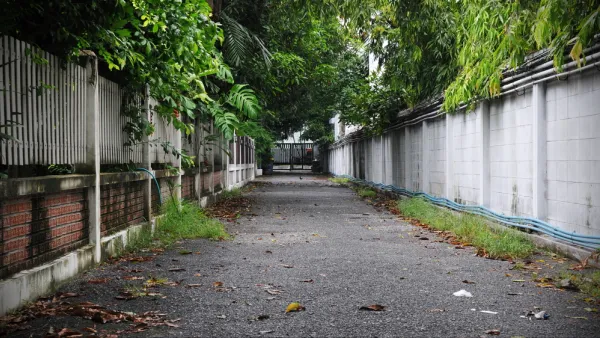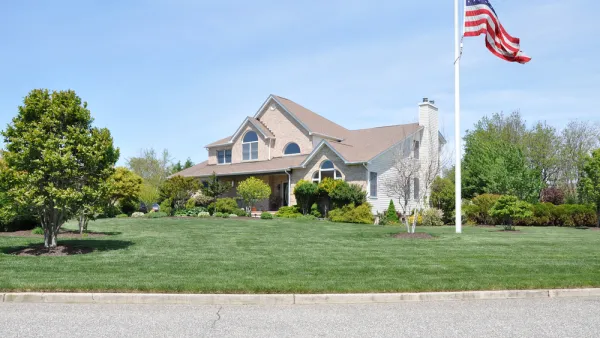The federal government has no official definition of suburban, even though a majority of Americans say they live in suburban communities.

Shawn Bucholtz and Jed Kolko describe one of the facts of American life: most U.S. residents live in suburbs, but the federal government doesn't actually categorize communities as suburban. The federal government makes a distinction between urban and rural, but not for suburban.
"The lack of an official federal definition of suburban means that government data are not reported separately for suburban areas. That makes it hard to measure the reach and impact of federal programs and to produce vital statistics about Americans and their communities," according to the article.
In a small step in the right direction, the 2017 American Housing Survey (by the Office of Policy Development and Research) recently released data finding "about 52 percent of people in the United States describe their neighborhood as suburban, while about 27 percent describe their neighborhood as urban, and 21 percent as rural." That's a majority, and it echoes previous surveys undertaken by outside the government.
In addition to advocating for the federal government o gather data in a way that reflects the way Americans view their communities, the article also tries a few other angles of approach for revealing more about the statistical realities of the suburbs in the United States.
FULL STORY: America Really Is a Nation of Suburbs

National Parks Layoffs Will Cause Communities to Lose Billions
Thousands of essential park workers were laid off this week, just before the busy spring break season.

Retro-silient?: America’s First “Eco-burb,” The Woodlands Turns 50
A master-planned community north of Houston offers lessons on green infrastructure and resilient design, but falls short of its founder’s lofty affordability and walkability goals.

Delivering for America Plan Will Downgrade Mail Service in at Least 49.5 Percent of Zip Codes
Republican and Democrat lawmakers criticize the plan for its disproportionate negative impact on rural communities.

Test News Post 1
This is a summary

Test News Headline 46
Test for the image on the front page.

Balancing Bombs and Butterflies: How the National Guard Protects a Rare Species
The National Guard at Fort Indiantown Gap uses GIS technology and land management strategies to balance military training with conservation efforts, ensuring the survival of the rare eastern regal fritillary butterfly.
Urban Design for Planners 1: Software Tools
This six-course series explores essential urban design concepts using open source software and equips planners with the tools they need to participate fully in the urban design process.
Planning for Universal Design
Learn the tools for implementing Universal Design in planning regulations.
EMC Planning Group, Inc.
Planetizen
Planetizen
Mpact (formerly Rail~Volution)
Great Falls Development Authority, Inc.
HUDs Office of Policy Development and Research
NYU Wagner Graduate School of Public Service





























